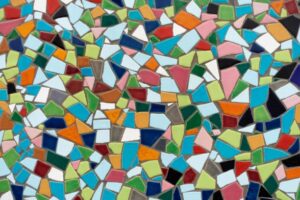Tiles Adelaide: How to Make a Mosaic Art Piece
Mosaic tiles are a great way to add texture and character to any room. They are available in a wide range of materials and finishes and can be used as splashbacks or feature walls.
Mosaic tiles are made from small pieces of tile called tesserae, which form intricate freeform or geometric patterns. They are a famous choice for kitchen and bathroom splashbacks, as well as flooring in laundries, pathways, verandahs, and swimming pools. For more information about the mosaic tiles in Adelaide, click here.
Creating art
 Mosaic art is a beautiful way to express yourself creatively. It’s a great craft project for beginners and experienced artists alike. In this blog, we’ll show you how to make a mosaic art piece using tile and glass.
Mosaic art is a beautiful way to express yourself creatively. It’s a great craft project for beginners and experienced artists alike. In this blog, we’ll show you how to make a mosaic art piece using tile and glass.
Before starting your mosaic, you’ll need to gather the necessary materials. You can find mosaic tiles in Adelaide at stores like Aurees Tiles and tools such as tile nippers. You should also prepare the surface of your mosaic by waterproofing it if needed.
If you’re planning on creating a functional mosaic art piece, like a bird bath or pot plant holder, it’s important to waterproof the surface. This will prevent the mosaic from becoming damaged over time. To waterproof the surface, use a waterproof additive and apply it to the surface. Follow the instructions on the packaging to ensure the best results.
Choosing a design
Mosaic tiles are highly versatile and come in different shapes, sizes, textures and colours. Their reflective surface bounces off light, making small spaces look brighter and more prominent. They are also highly durable, stain-resistant and easy to maintain. For more information about the mosaic tiles Adelaide, click here.
Before you decide on a design for your mosaic tiles, consider the style and mood you want to achieve in your home. Rich earthy tones and intricate patterns can create a classic heritage feel, while lighter tones and simple patterns will look more modern.
Mosaics can be installed on walls and floors in interior spaces or used as a kitchen splashback or as an outdoor feature wall. Mosaics are also suitable for use on curved surfaces and look great in both contemporary and heritage homes.
They are an excellent addition to period houses, mainly Victorian, Federation and Art Deco styles. Mosaics can even be used to create a stunning entrance pathway or verandah. Mosaic tiles are ideally suited to wet areas and high-traffic zones because they are robust, water-resistant and anti-slip.
Getting started
Mosaic is an ancient art form that packs a lot of style into one square metre. While tilers used to painstakingly lay each tessera individually, today, mosaic tiles come in mosaic sheet form fixed on a fibreglass mesh that makes tiling easier. However, laying mosaic sheets still requires careful attention. Mosaic sheets are prone to shifting and warping, so you should mark a level line on the surface of your wall or floor. Use a float or flat piece of timber to flatten the mosaic sheet and ensure that the tiles within the sheets are correctly lined up.
Once you have chosen your design and prepared your surface, it’s time to start assembling your mosaic. Make sure you have all your materials ready before you begin, including a tile nipper and adhesive. It would help if you also prepared your grout by mixing it to a toothpaste consistency and following the instructions on the packet. For more information about the mosaic tiles Adelaide, click here.
Keeping your mosaics clean
Mosaics require a bit more care than regular tiles to keep them looking their best. They should be swept or vacuumed regularly and washed with warm water and mild detergent. They can also be sealed periodically to protect against stains and mildew growth.
When cleaning mosaics, it is essential to sweep or dust them regularly to prevent dirt from settling in the grout or caking onto the surface. The use of a broom with a soft brush attachment is preferable, as the softer bristles are less likely to scratch mosaic tiles.






